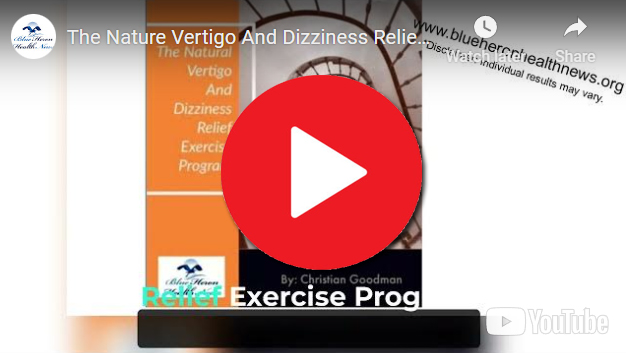
The Nature Vertigo And Dizziness Relief Exercise Program™ By Christian Goodman if you are suffering Vertigo and Dizziness and you are looking for natural solution, then Vertigo and Dizziness Program is here to help you. It will show you very simple but effective exercises that will stop this condition once and fall all. You will start to see positive results immediately when you start following the recommended head exercises and within days, this condition will be a thing of the past. This program is also very affordable and comes with 60 days 100% money back guarantee.
How does central vertigo differ from peripheral vertigo?
Central vertigo and peripheral vertigo are two distinct types of vertigo, each with different causes, characteristics, and underlying mechanisms. Here’s how they differ:
1. Location of the Problem:
- Central Vertigo: This type of vertigo arises from issues in the central nervous system (CNS), specifically the brainstem or cerebellum. The brainstem controls balance and coordination, and disturbances in this area can lead to a misinterpretation of sensory signals related to balance.
- Peripheral Vertigo: Peripheral vertigo originates from the inner ear or the vestibular system, which includes the semicircular canals and the vestibular nerve. These structures are responsible for detecting motion and helping maintain balance. Problems in these areas can disrupt the signals sent to the brain, causing vertigo.
2. Causes:
- Central Vertigo: Common causes of central vertigo include:
- Stroke (especially affecting the brainstem or cerebellum)
- Multiple sclerosis
- Tumors in the brainstem or cerebellum
- Vestibular migraine
- Head trauma
- Infections affecting the brain (such as encephalitis)
- Cerebellar ataxia
- Peripheral Vertigo: Common causes of peripheral vertigo include:
- Benign paroxysmal positional vertigo (BPPV): caused by displaced otoliths (calcium crystals) in the inner ear.
- Meniere’s disease: characterized by fluid buildup in the inner ear.
- Vestibular neuritis: inflammation of the vestibular nerve.
- Labyrinthitis: inflammation of the inner ear structures, often following an infection.
- Cholesteatoma: abnormal skin growth in the ear.
3. Symptoms:
- Central Vertigo:
- Vertigo tends to be more persistent and may worsen with changes in head position, though it is not typically triggered by specific movements.
- May be accompanied by other neurological symptoms, such as nausea, vomiting, double vision, difficulty swallowing, slurred speech, ataxia (lack of coordination), or weakness.
- Imbalance or difficulty walking is often present, and symptoms may be more severe or progressive over time.
- Peripheral Vertigo:
- Vertigo is often episodic and can be triggered by specific head movements (e.g., turning the head, tilting, or bending over).
- Tends to be associated with severe dizziness and spinning sensations.
- Less likely to be associated with additional neurological symptoms like weakness or speech difficulties.
- Symptoms may come on suddenly, with some forms, like BPPV, resolving after a short duration (minutes to hours).
4. Nystagmus (Involuntary Eye Movements):
- Central Vertigo: Nystagmus in central vertigo is often vertical or direction-changing (the direction of the nystagmus changes when the patient looks in different directions). It may not dissipate when the patient’s gaze is fixed.
- Peripheral Vertigo: Nystagmus in peripheral vertigo is typically horizontal and unidirectional (it remains in one direction regardless of the patient’s gaze). It often decreases or fades when the patient focuses their gaze in one direction.
5. Onset and Duration of Symptoms:
- Central Vertigo: The onset may be gradual and symptoms are typically long-lasting or progressive. It can worsen with time and may not resolve without treatment.
- Peripheral Vertigo: The onset is usually sudden and symptoms may last for a short duration (from a few minutes to hours). In some cases, vertigo episodes can come and go, as seen in BPPV or Meniere’s disease.
6. Severity and Impact:
- Central Vertigo: The vertigo tends to be more severe and may be accompanied by serious neurological symptoms. The person may have difficulty maintaining balance, walking, or performing daily activities.
- Peripheral Vertigo: While peripheral vertigo can be intense (especially in conditions like BPPV or Meniere’s disease), it is typically less debilitating than central vertigo and is often temporary or episodic.
7. Treatment Approaches:
- Central Vertigo: Treatment focuses on addressing the underlying cause, such as managing a stroke, tumor, or multiple sclerosis. Medications to control symptoms and physical therapy (e.g., vestibular rehabilitation therapy) may also be used to improve balance and reduce dizziness.
- Peripheral Vertigo: Treatment usually targets the specific cause of the vertigo. For example:
- BPPV may be treated with the Epley maneuver (a repositioning procedure).
- Vestibular neuritis or labyrinthitis may be treated with antiviral or antibiotic medications, along with anti-vertigo medications and vestibular rehabilitation exercises.
- Meniere’s disease may require a combination of medications to control fluid buildup and dietary changes (e.g., reducing salt intake).
-
Conclusion:
While both central and peripheral vertigo involve dizziness and imbalance, they differ in their causes, symptoms, and treatments. Peripheral vertigo is usually less serious and often responds well to treatment targeting the underlying cause, such as repositioning maneuvers or medications. In contrast, central vertigo can be indicative of more serious conditions affecting the brain or nervous system and requires a more comprehensive medical evaluation to manage the root cause and associated symptoms.

The Nature Vertigo And Dizziness Relief Exercise Program™ By Christian Goodman if you are suffering Vertigo and Dizziness and you are looking for natural solution, then Vertigo and Dizziness Program is here to help you. It will show you very simple but effective exercises that will stop this condition once and fall all. You will start to see positive results immediately when you start following the recommended head exercises and within days, this condition will be a thing of the past. This program is also very affordable and comes with 60 days 100% money back guarantee.